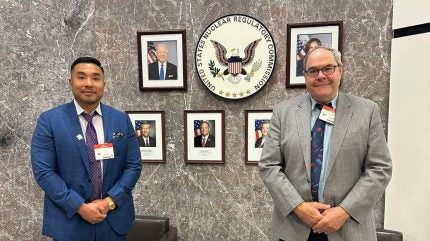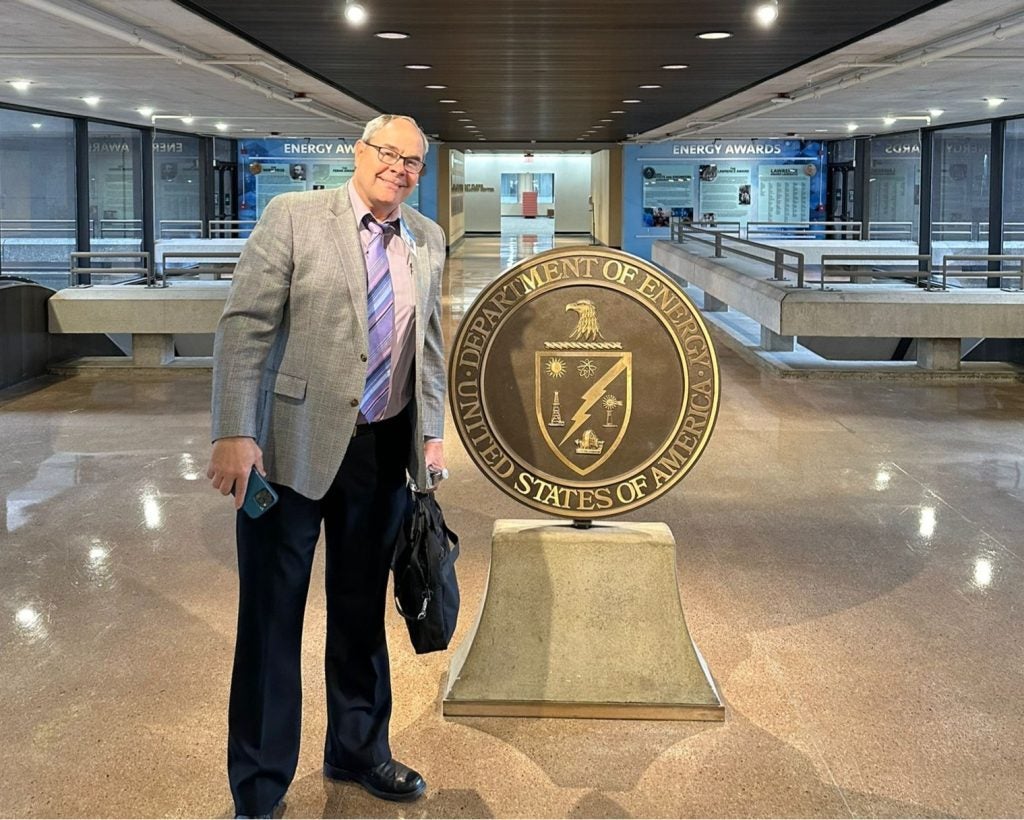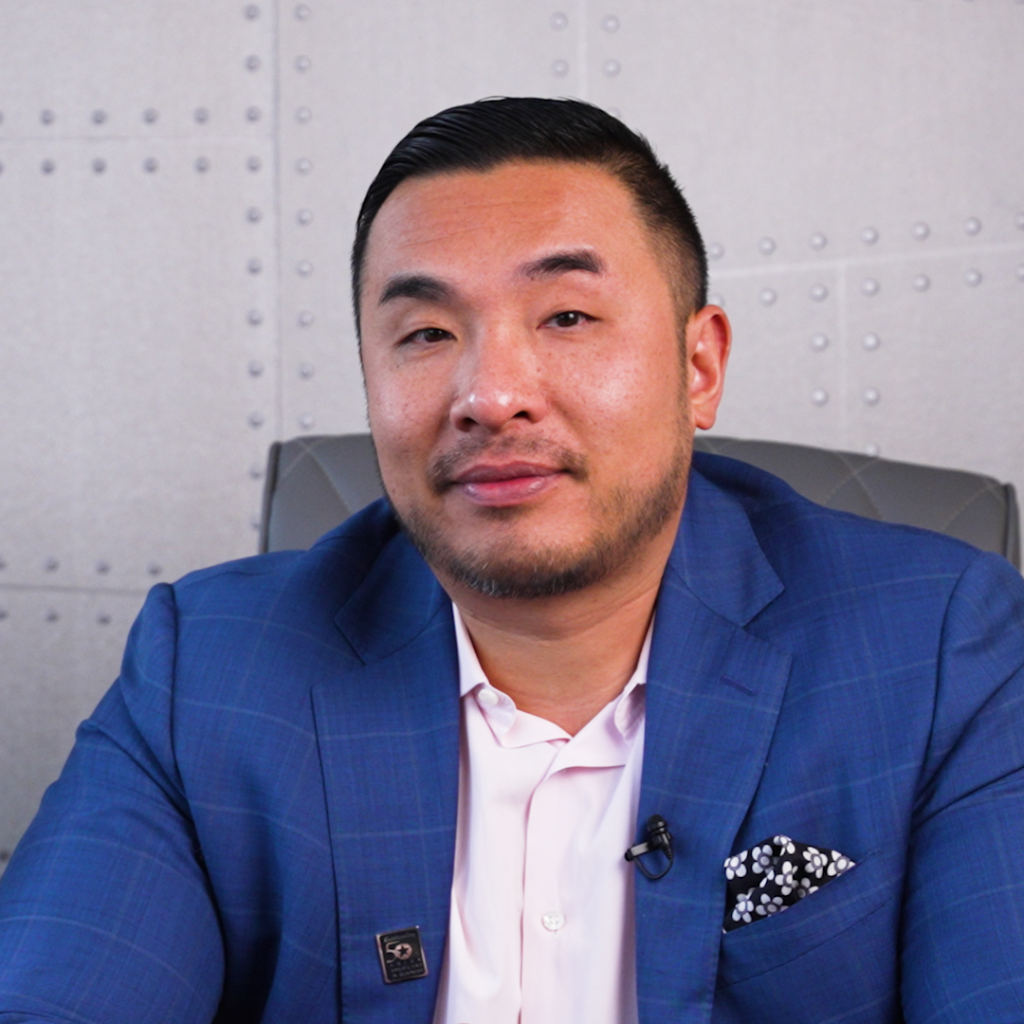
As Canada eyes a nuclear renaissance with emerging technologies like microreactors, which require enriched uranium, industry experts argue that the missing link in its otherwise robust nuclear supply chain is domestic uranium enrichment – a step that could help the country secure energy independence and a competitive edge in the global clean energy race.
Advanced laser enrichment technology company LIS Technologies’ CEO and co-founder, Christo Liebenberg, and executive chairman and president, Jay Yu, expand on why Canada needs to develop domestic uranium enrichment capabilities and how the North American country can overcome the hurdles in pursuing this path.

Discover B2B Marketing That Performs
Combine business intelligence and editorial excellence to reach engaged professionals across 36 leading media platforms.
Jackie Park (JP): Why do you believe Canada needs a domestic uranium enrichment programme?
Christo Liebenberg (CL): Canada has always wanted to get into enrichment, from as far back as the early 1990s. For more than 30 years, it wanted to own essentially everything in the whole nuclear fuel supply chain. Now, the only thing the country does not have any capability in is, indeed, enrichment.
If you look at Canada’s reactors, like the CANDU (CANada Deuterium Uranium) reactors, they don’t need enriched uranium. They use either natural or very low-enriched uranium. So, traditionally, Canada has been okay with just natural uranium.
But now, companies like Cameco want to complete the whole fuel cycle because it has aspirations for advanced reactors, which need high-assay low-enriched uranium.
Jay Yu (JY): Canada currently relies on foreign countries for enrichment, with legal restrictions prohibiting such activities. With emerging nuclear technologies like Westinghouse’s eVinci microreactor requiring enriched uranium, and Canada wanting to take part, it wants to build its enrichment capability, just like the US is currently building back its capabilities in enrichment and the nuclear fuel cycle.

US Tariffs are shifting - will you react or anticipate?
Don’t let policy changes catch you off guard. Stay proactive with real-time data and expert analysis.
By GlobalDataJP: What has stood in the way of Canada building enrichment capabilities?
JY: I think it was frowned upon because of the bad PR around nuclear bombs. That is one of the cornerstone issues for Canada, viewing it more in the traditional sense of “nuclear enrichment is for weapons” – but actually, its use in advanced reactors and their ability to provide clean energy to the country should be the focus.
CL: It will be relatively easy for Canada to get into centrifuge enrichment. That is an established technology. So, if it really wanted to get into enrichment, it could just go the centrifuge route. However, many Canadian companies, like Cameco, have opted for laser technologies because laser enrichment has always been seen as the holy grail of enrichment.
But there is a stigma that laser enrichment doesn’t work. After nearly 50 years of development and 26 countries trying it out, no one has been able to build a commercial facility. The scaling challenges have been a big issue. So, taking the laser technology route, which has had slow progress over the years, has contributed to this.
JP: Can you elaborate on the challenges of scaling laser enrichment technologies?
CL: It has been a long road for laser enrichment technologies. There are three different laser enrichment processes.
The first is AVLIS, which stands for atomic vapor laser isotope separation. The scaling challenges with AVLIS is twofold. The first problem is it vaporises the uranium metal, but the vapour pressure being very low makes it economically unviable. The second problem is the collection efficiency. The vaporised uranium is very hot and corrosive, making the collection of the enriched uranium troublesome. So, after billions of dollars spent on development, all the countries trying it – the US, France, Japan and more – gave up on this.

The second laser process is MLIS, standing for molecular laser isotope separation. Dozens of countries have tried this as well. It works in the lab, but the scaling challenges here are specifically in the lasers it uses. Without getting too technical, MLIS uses lasers with a 16-micron (µm) wavelength, which is an extremely big, complex system to be able to scale up easily.
The third process is CRISLA, or condensation repression isotope selective laser activation, which is what our company does. CRISLA uses a 5µm wavelength, which has nowhere near the same complexities as the 16µm, making it more easily are scalable. We believe that CRISLA has a path to commercialisation that avoids the challenges AVLIS and MLIS faced.
JP: How would a domestic uranium enrichment programme enhance Canada’s nuclear industry and address broader energy concerns?
JY: Back in the 1960s and 1970s, the US was the biggest exporter of nuclear fuel and services, and now it is the biggest importer. Canada is in the same bucket where it needs enrichment capabilities so that it doesn’t have to be in that situation of foreign reliance. I think it will serve as a key component to reinforcing its energy security.
In addition, if you look at Canada’s demographics, there is a lot of remote communities and towns in the northern territories that could benefit from all these new nuclear technologies. They truck in millions of dollars of diesel to provide fuel for the power generators in these towns. If we are able to now go into these northern territories and build microreactors alongside enrichment facilities, providing the whole fuel cycle, with uranium mines already close by [many located in northern Saskatchewan, just under the northern territories], Canada would be able to domestically secure and provide so much baseload energy – clean energy – to these communities for decades to come.
CL: It is worth touching on the peripherals of enrichment, the broader nuclear fuel cycle, which Canada is already good at. Canada has a lot of uranium mines. Canada is also one of the only three countries in the entire Western world that does uranium conversion, and it is very good at producing that feedstock [through conversion] needed for enrichment. This is important because, globally, conversion is one of the weakest links in the entire nuclear fuel supply chain right now, with demand soaring and not enough supply.
The other weakest link, the bottleneck, is enrichment. If the world wants to triple nuclear energy by 2050 [as established at COP28], it needs to scale up its conversion and enrichment capacity ten-times over the next 25 years. Canada [as one of the initial signatories of the nuclear tripling pledge] thus needs to not only keep sticking to mining and conversion but also start contributing to scaling enrichment. That will be key to the country becoming energy independent and helping the world meet its nuclear target.
JP: What regulatory approvals or reforms would be required for Canada to begin a uranium enrichment programme?
JY: Is Canada ready for this new era of nuclear with all these advanced technologies that are emerging? There are dozens of new start-ups in the US that are building new microreactors or SMRs (small modular reactors), and Canada is obviously looking at this and wanting to hop on this train – but to build these new nuclear technologies, you need to go higher than the country’s usual low enrichment of 5%. Regulatory reform would be needed to go higher, which would be from the Canadian Nuclear Safety Commission (CNSC).

If Canada is to move in that direction, it needs to push that agenda at the government level. In the US, the Biden administration was able to pass the ADVANCE Act to help expedite all these new nuclear technologies through reforming the regulatory body and provide funding opportunities to push forward, expediting all the bureaucracy that was historically there. The only way to get CNSC to move is through action, like the US, from the top of the government, which will trickle down and help expedite plans for enrichment.
CL: The biggest challenge will be with CNSC in terms of figuring out the licensing of enrichment plans – most importantly, figuring out how to get that done effectively and quickly. The licensing of enrichment plans can take anywhere between six to eight years, but hopefully, with government support, like the ADVANCE act in the US, Canada too can accelerate the licensing process.
I would add that enrichment is considered an SNP, which stands for sensitive nuclear technology, requiring a much higher level of scrutiny and security. That is why a lot of enrichers, whether in the US, France or elsewhere, don’t talk about exactly how their process works – it is classified information. That means there will be a whole new lot of different requirements, additional requirements, that Canadian companies will need to work through should they decide to enrich their own uranium.
JP: Are there any other hurdles you anticipate Canada will face in developing enrichment capabilities, and how can those challenges be addressed?
JY: As I mentioned earlier, changing the public sentiment will be important, and I think education is key to advance this. The government needs to tell the public that they shouldn’t fear this. Nuclear is already safe, but now, with these new technologies, it is even safer. They don’t use liquid cooling, which means they can’t blow up.
If the Canadian population fears that enrichment is going to be used for nuclear proliferation, the CNSC and International Atomic Energy Agency could come in and put safeguards around enrichment levels and such to make sure they are not weapons-grade – really make the population believe “we are not looking to develop further than for energy”.
Then, the government also needs to educate the public about why domestic enrichment is necessary. The government has already announced all these plans to expand nuclear over the past few years, like funding billions of dollars into SMRs that need enriched uranium. So, it is like a chicken or egg problem – we spend that much money on new nuclear technologies but then do not develop what is needed [uranium enrichment capabilities] for these technologies. Now you are back to square one, where you are reliant on foreign entities to provide the fuel, when the purpose of expanding these technologies was energy independence.
JP: Given competition from countries like the US, Russia, China and the EU, how can Canada carve out a competitive advantage in the enrichment sector?
CL: Cameco, the only major player in Canada, has a strategic relationship with laser enrichment company Silex through which it owns 49% of the GLE (global laser enrichment) project. I can see Cameco being successful with lasers. Lasers are known to be very cost-effective because lasers can selectively target only uranium-235. So, I think if Cameco puts in the work and can help commercialise laser enrichment, it can have a huge competitive advantage.
JP: Do you see Canada domestically securing the comprehensive nuclear supply chain soon?
JY: To be honest, I don’t know. The support has to start from the top of the government. In the US, one of the few areas that had full bipartisan support was around nuclear, building back up the industry’s whole supply chain and supporting its emerging technologies. The Canadian Government will need to walk down a similar path, then also get positive feedback from its population.





